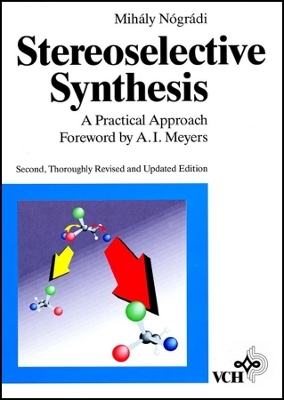
Stereoselective Synthesis: A Practical Approach
Wiley-VCH (Hersteller)
978-3-527-29242-4 (ISBN)
- Titel erscheint in neuer Auflage
- Artikel merken
List of Symbols and Abbreviations Introduction I General Concepts of Stereoselective Synthesis 1.1 Principles of Differentiating Molecules 1.2 Characterization of Stereoisomers. Conformation and Configuration 1.3 Intramolecular Symmetry. Topicity and Prochirality 1.4 Selectivity in Chemistry 1.4.1 Substrate Selectivity 1.4.1.1 Substrate Diastereoselectivity (Diastereomer Selectivity) 1.4.1.2 Substrate Enantioselectivity (Enantiomer Selectivity). Kinetic Resolution 1.4.2 Product Selectivity 1.4.2.1 Formation of Stereoisomers 1.4.2.2 Conditions Necessary for Stereoselectivity 1.4.2.3 Concept of Stereodifferentiation 1.4.2.4 Niethods for Inducing Stereoselectivity 1.4.3 Stereoselective Synthetic Strategies 1.4.3.1 Enantioconvergent Synthesis 1.4.3.2 Selective Preparation of Both Enantiomers from a Single Substrate 1.5 Kinetics and Thermodynamics of Stereoselective Reactions Stereoselective Catalytic Reductions 2.1 Stereoselective Homogeneous Hydrogenations with Rhodium-. Ruthenium- and Iridium-Phosphine Catalysts 2.1.1 Hydrogenation of Olefinic Bonds 2.1.1.1 Chiral Phosphorus Containing Ligands 2.1.2 Enantioselective Catalytic Hydrogenation of Ketones and Imines 2.1.3 Diastereoselective Hydrogenations in Homogeneous Phase 2.2 Catalytic Hydrosilylation 2.3 Heterogeneous Stercoselective Catalytic Hydrogenations 2.3.1 Enantioselective Heterogeneous Catalytic Hydrogenations 2.3.2 Diastereoselective Heterogeneous Catalytic Hydrogenations 3 Stereoselective Non-Catalytic Reduction 3. 1 Enantioselective Reductions 3.1.1 Chiral Lithium Aluminum Hydrides 3.1.1.1 Reduction of Carbonyl Groups 3.1.1.2 Reduction of C=N and C=C Bonds 3.1.2 Chirally Modified Hydroborates 3.1.3 Chiral Bomnes and Boronates 3.1.4 Enantioselective Reductions with Hydride Transfer from Carbon 3.1.4.1 Chiral Trialkyl Bomnes 3.1.4.2 Chiral Metal Alkyls 3.1.4.3 Chiral Metal Alkoxides 3.1.4.4 Chiral 1,4-Dihydropyridines 3.1.5 Correlation of Substrate Constitution and Enantioselectivity 3.2 Diastereoselective Reduction of Carbonyl Groups 3.2.1 Stereochemistry of Diastereoselective Ketone Reduction 3.2.2 Practical Aspects of Diastereoselective Ketone Reductions 4 Stereoselective Oxidations 4.1 Enantioselective Oxidations 4.1.1 Epoxidation with Chiral Oxidants 4.1.2 Oxidations in the Presence of Chiral Catalysts 4.2 Diastereoselective Oxidations 4.2.1 Diastereoselective Epoxidation 4.2.2 Various Diastereoselective Oxidations 5 Stereoselective Carbon-Carbon Bond Forming Reactions by Nucleophilic Addition to Carbonyl Groups 5.1 Addition of Simple Nucleophiles to Carbonyl Compounds 5.1.1 Enantioselective Additions 5.1.2 Diastereoselective Additions 5.1.3 Additions to C=N Bonds 5.2 Addition Involving Allylmetal and Allylboron Compounds 5.2.1 General Aspects of Allylmetal Addition 5.2.2 Addition of Alkylboron Compounds 5.2.3 Addition of Allyltitanium Compounds 5.2.4 Addition of Allyisilanes 5.2.5 Addition of Allyistannanes
| Reihe/Serie | Stereoselective Synthesis: A Practical Approach | 1.20 |
|---|---|
| Verlagsort | Weinheim |
| Sprache | englisch |
| Gewicht | 853 g |
| Einbandart | gebunden |
| Themenwelt | Naturwissenschaften ► Chemie ► Organische Chemie |
| Naturwissenschaften ► Chemie ► Physikalische Chemie | |
| ISBN-10 | 3-527-29242-X / 352729242X |
| ISBN-13 | 978-3-527-29242-4 / 9783527292424 |
| Zustand | Neuware |
| Informationen gemäß Produktsicherheitsverordnung (GPSR) | |
| Haben Sie eine Frage zum Produkt? |